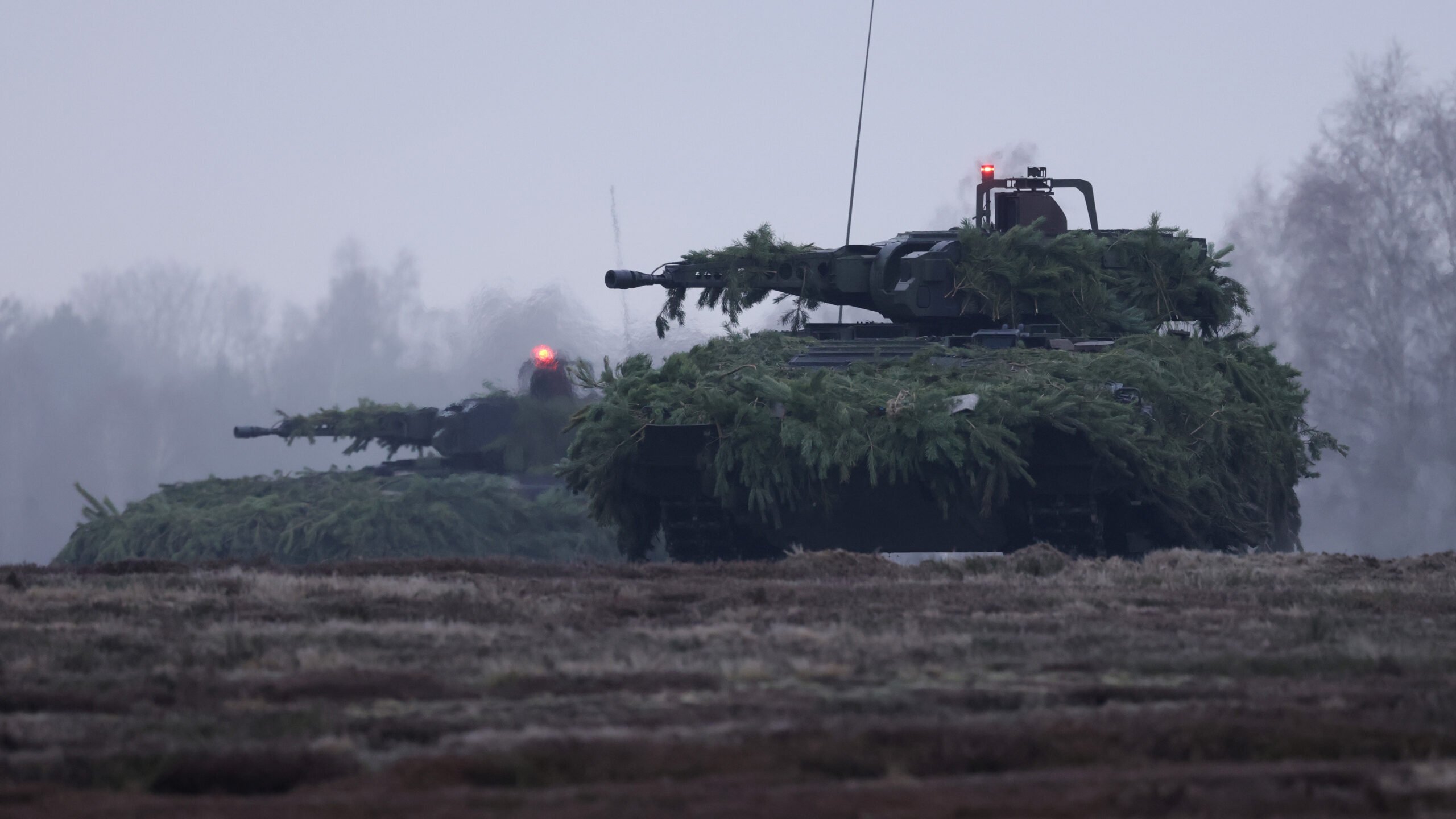
Puma infantry fighting vehicles of Panzergrenadierbataillon 122, a mechanized infantry unit of the Bundeswehr, the German armed forces, participate in a live fire exercise during a visit by German Defence Minister Boris Pistorius at Altengrabow on January 26, 2023 near Moeckern, Germany. (Photo by Sean Gallup/Getty Images)
WASHINGTON — Germany will begin receiving an additional 50 Puma infantry fighting vehicles in late 2025 after inking a $1.2 billion deal with industry, according to a new industry announcement about the deal.
The industry team released new contracting details today in which $624 million will be funneled towards Krauss-Maffei Wegmann (KMW), while Rheinmetall will receive $545 million. If production proceeds smoothly, new vehicles will begin being delivered to the Bundeswehr in December 2025 with the goal of finishing the delivery towards the beginning of 2027.
“In addition to the 50 armored fighting vehicles, the order encompasses spare part packages and special tool sets as well as eight MELLS flight-phase simulators,” the industry announcement said. “Furthermore, an option exists for additional driver training vehicles and the integration of a turret-independent secondary weapon system.”
The deal comes after German lawmakers agreed to the acquisition earlier this month and provided the Ministry of Defense with the authority to purchase 179 IFVs.
The Puma IFV is meant to be key for the German Army’s mechanized infantry formation movements around on the battlefield, with each vehicle designed to transport nine soldiers: the vehicle commander, gunner and driver, along with six infantry soldiers. The Puma is the planned successor for the Marder, but the new vehicle has been plagued with a slew of operational problems that forced the German government to pause purchases in late 2022.
Around that same time, the German Federal Ministry of Defense (BMVg) also conceded that it has serious military capability gaps caused by three decades of “peacetime” underfunding — and that filling those gaps quickly won’t be cheap.
In the aftermath of Russia’s invasion of Ukraine, the government approved a $108 billion “special arms fund” to bolster its military, putting 10 acquisition programs, including the Puma, under that authority.
Move over FARA: General Atomics pitching new Gray Eagle version for armed scout mission
General Atomics will also showcase its Mojave demonstrator for the first time during the Army Aviation Association of America conference in Denver, a company spokesman said.


























